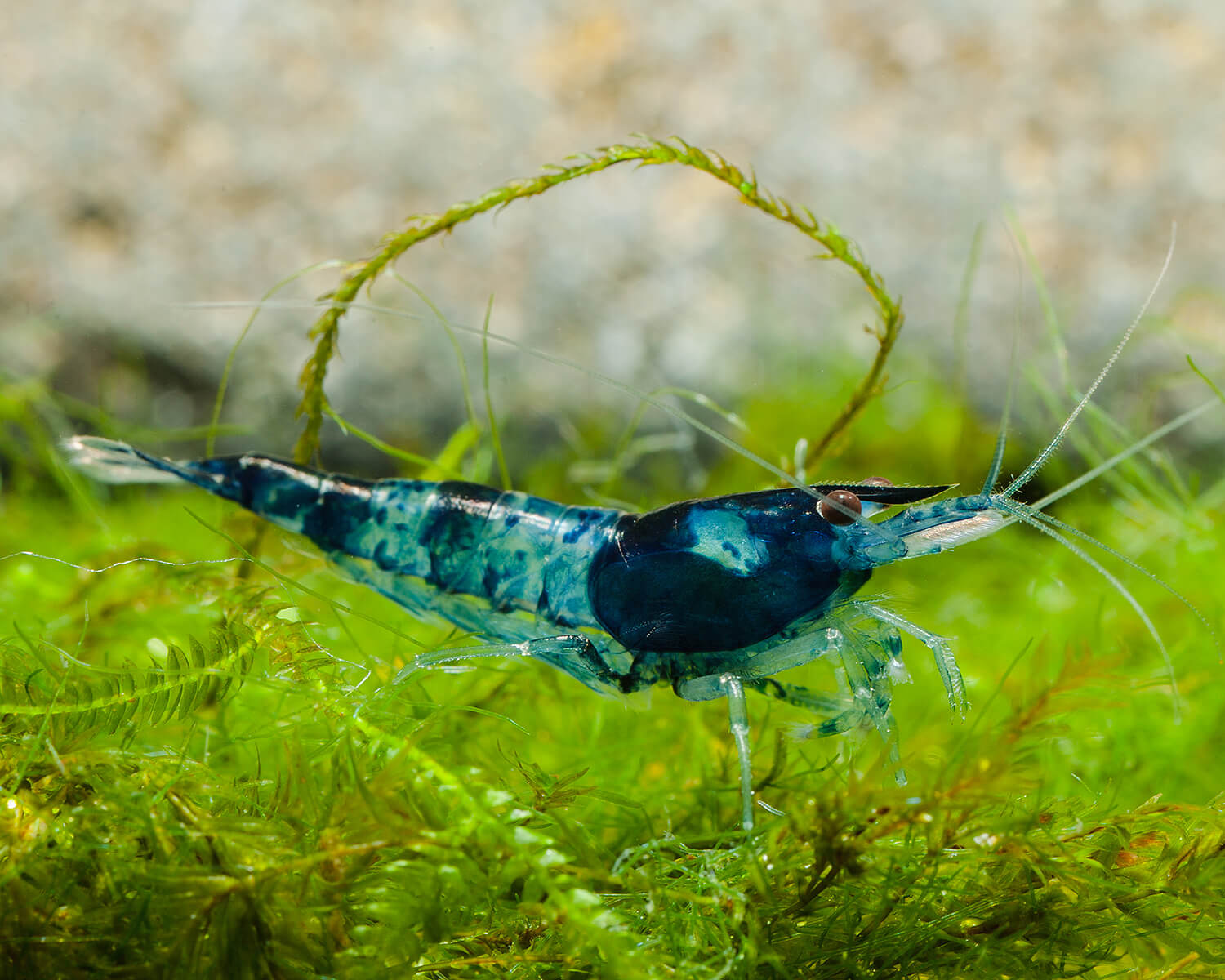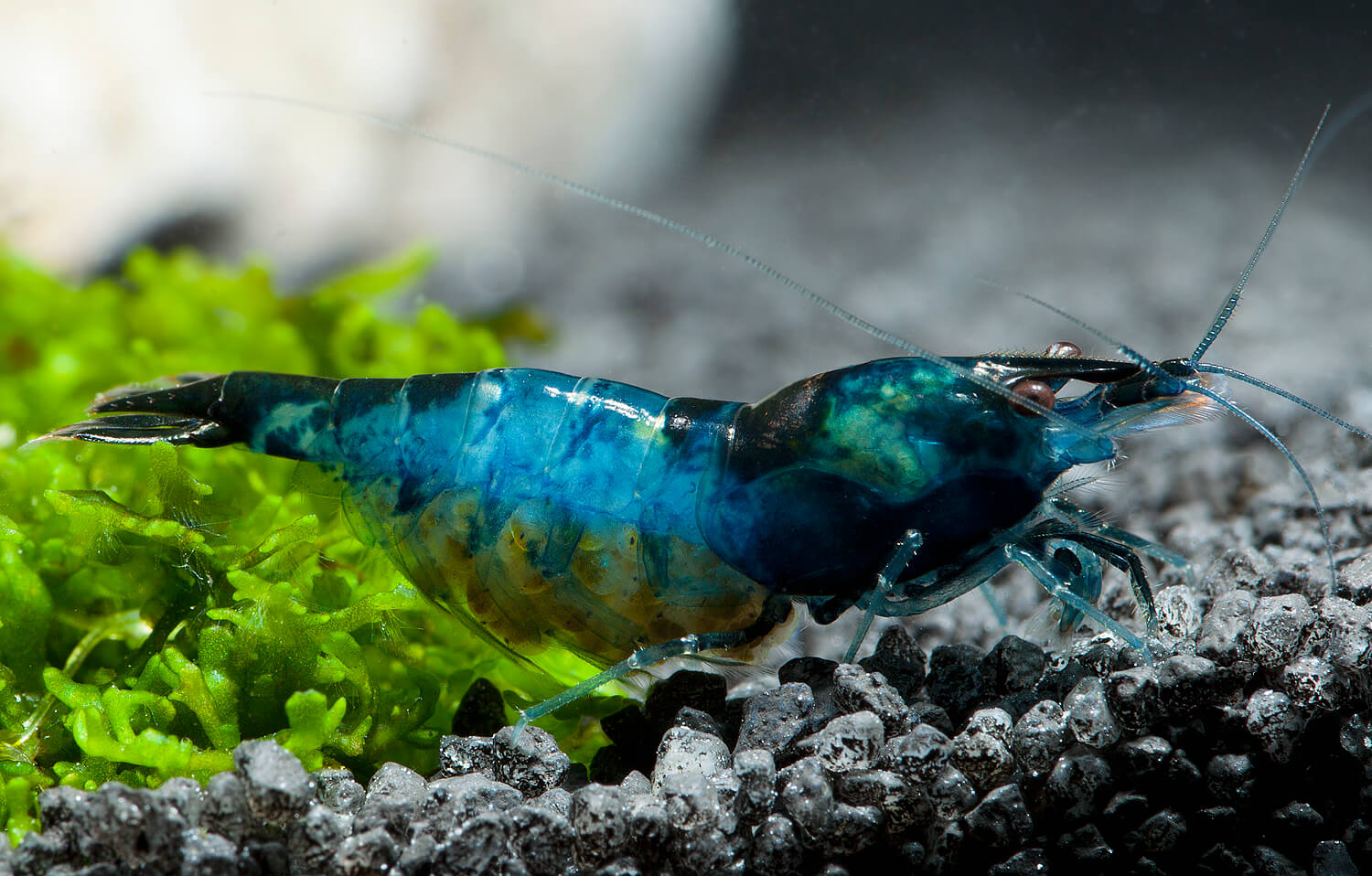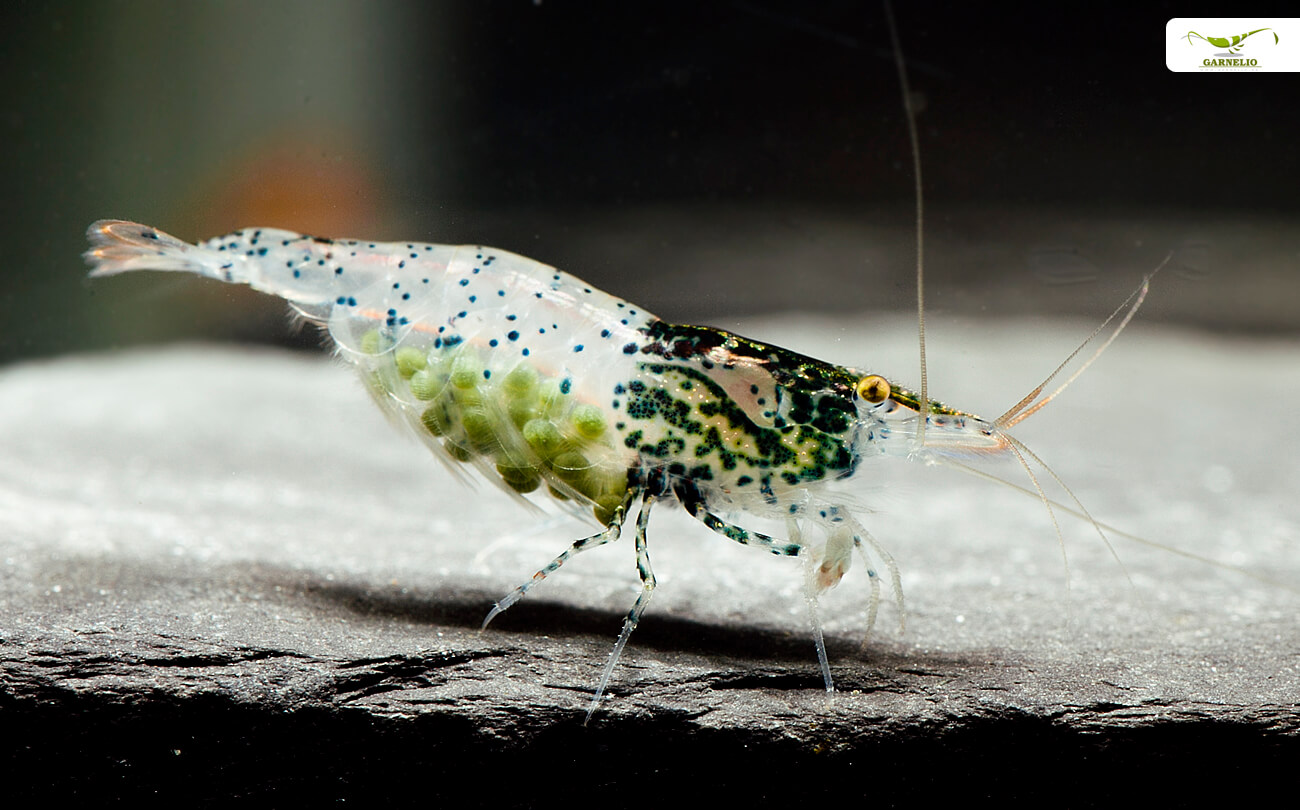Reproduction stop for dwarf shrimp
What to do if shrimp do not reproduce or if the young do not come up?
Many dwarf shrimp species are extremely prolific, think of the well-known and popular Red Fire. Even the bee shr imp and tiger shr imp, which are considered to be a bit trickier, can hardly be stopped if the external conditions are optimal for them. From time to time, however, it can still happen that reproduction stops, either because the females do not become pregnant at all or because the young do not come up. In this article we would like to shed some light on the reasons for this.
Acclimation period
When dwarf shrimp come into a new aquarium, it is quite normal that they pause with reproduction for a while. The organism is busy adjusting to the new conditions. If the changeover is completed after one to two months (or even sooner if the water values are favorable and as similar as possible), things usually start again, mating swims can be observed and soon egg-bearing females can be found.

Males are slim built and do not have a bulging "belly". They are also usually paler in color than females. The egg spot on the nape of the neck is completely absent.
Juveniles
If you have bought a group of juveniles, you have to wait until they are sexually mature. Female Red Fire shrimp, for example, begin to bear eggs at about 1 to 1.2 cm body length. Females carrying for the first time may drop their eggs. Practice makes perfect, and the next time or two you may observe them carrying their eggs until they hatch.
Both sexes present?
If only one sex is present in the shrimp group, the matter of reproduction is of course difficult. Males can be recognized by their slimmer build and slightly smaller final size, females have a bulkier body and deep downward extended belly pockets. In more translucent varieties like the White Pearl shrimp, you can see a smaller to larger saddle-shaped egg spot in the neck of females, at the transition from the head carapace to the abdomen, which tapers off to a point at the back. Do not confuse this with the stomach, which is a little lower and further forward! The larger the egg spot, the less time you have to wait for the shrimp to finally set eggs.

Females are beefy built, have a bulging "belly" and may carry an egg spot on the neck or eggs in the "belly" area depending on reproductive status. Females are usually more boldly colored than males.
Winter break
In nature, shrimp from temperate climates such as bee shr imp , tiger shrimp or bumblebee shrimp take a winter break during the cold months. From time to time this phenomenon is also observed in Red Fires and other members of the genus Neocaridina. It is not known to what reason the shrimps do this - but the winter break has often been observed even in temperate aquariums with the same lighting all year round. It corresponds to the natural habits of the shrimps and contributes to a longer life of the females, since they can recover from the strains of brood care. From March/April onwards, the shrimp tanks start breeding again all by themselves. Even the bred color varieties like Taiwan Bees, which do not occur in nature, sometimes take such a winter break.
Too high stocking
If the shrimp population in the aquarium is too high, baby shrimp often do not find enough food and do not come up. This can be addressed with regular dust feeding. If the population is much too high, the females will no longer become pregnant due to the increasing stress. Then the only solution is to thin out the group (attention, adjust food quantity accordingly!) and give away the surplus animals - or set up another aquarium ..
Water values
Often with unsuitable water values you have pregnant females, but the young animals do not come up. Especially with shrimps from soft water like bee shrimps or bumblebee shrimps we recommend to adjust the water values to the needs of the shrimps by using osmosis water or demineralized water and an appropriate mineral salt. Also an active Soil can help to bring the conditions for the animals into the optimal range.
In some cases it is even necessary to treat the water of Neocaridina species - for example if the nitrate content in the tap water is too high. Appropriate mineral salts are also available for them. If the water values are grossly unsuitable, it can also happen that the shrimp do not become pregnant at all, so a critical look is worthwhile in any case!

A pregnant Carbon Rili shrimp
Water changes
Regular water changes (approx. 20% to 50% per week) remove pollutants and create favorable conditions for shrimp, which in nature are often found in streams where they constantly get fresh water. They also have a favorable effect on the animals' desire to reproduce. In nature, cool water signals the beginning of the rainy season and thus the mating season for many shrimp species. During the rainy season, aquatic animals also find much more food. Water changes with slightly cooler and softer water (please not more than 2 °C temperature difference to the aquarium and not more than 50 to 100 µS difference in conductivity) in combination with slightly higher protein food(Natureholic Proteinfeed) can "boost" the reproductive joy.
Filter
If the young animals do not come up, it can also be due to the fact that the filter ( Blog: Technique in the shrimp aquarium) is not shrimp-safe. Often the small shrimp actively crawl into the filter because they find the filter sludge irresistible to bite on, so you should definitely cover the filter slots. With the Dennerle corner filter this can be done very easily with the Baby Protect, with external filters and backpack filters you can simply pull a foam cartridge for airlift filters over the filter intake. For other internal filters we recommend as a simple solution a piece of ladies pantyhose, which is pulled over the filter slots. If you put a few pieces of Cermec or Sintomec under the stocking, it will not clog up so quickly and will remain permeable longer.
Diseases
If the body of the shrimp has to fight with an infection ( immune system shrimp disease prophylaxis ), the reproduction stops of course. Here you should get to the bottom of the cause and fight the disease with appropriate measures. If the animals are healthy again and they have recovered, they usually start to reproduce again.
Feeding the shrimp
A healthy body is essential for good reproduction, and a varied diet, as close to nature as possible, is the basis for this. Our Natureholic shrimp food range not only contains all the vital substances shrimp need for healthy growth and magnificent colors, we have also deliberately included, for example, phospholipids and nucleotides in our protein feed, which female shrimp need to form high-quality eggs from which vital baby shrimp hatch. Brown fall foliage complements and completes the food supply and also provides hiding places for the baby shrimp.
Hiding places in the shrimp aquarium
Carrying females are susceptible to stress and therefore like to take cover. Especially hiding places planted with moss are ideal for them, because in the moss also the young animals find very good conditions and also hiding places. Also a moss cushion or a group of fine plants is good for them. Very important are hiding places for the females and the juveniles in the community tank in the presence of potential predators such as fish.
More tips for raising juvenile shrimp can also be found in our blog article"Shrimp breeding - raising juvenile shrimp"
